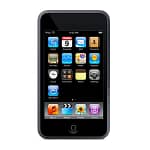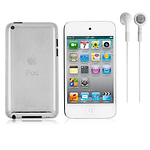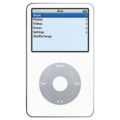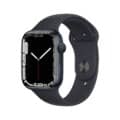- All Apple Devices
- iPod
- Apple iPod Touch 2nd Generation
Apple iPod Touch 2nd Generation
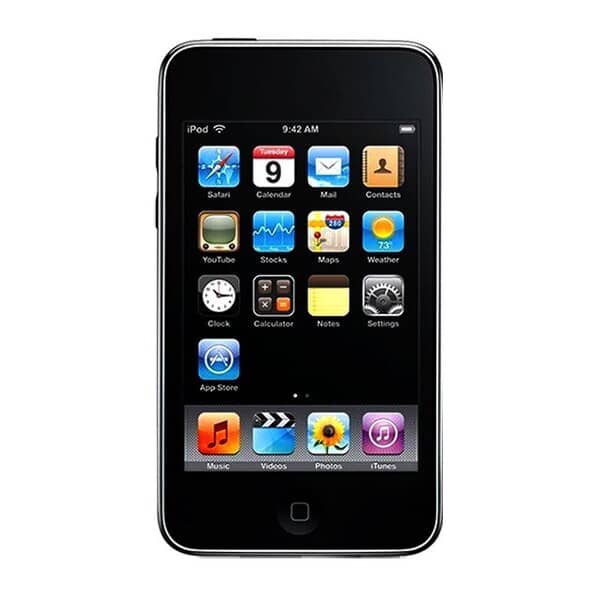
iPod Touch 2nd Generation
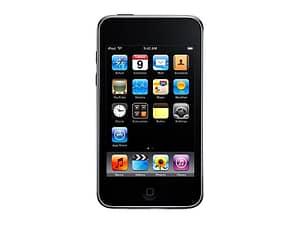
Product Brand: Apple
3
Pros
- Good sound quality
- Large storage capacity for music and videos
- Ability to browse the web and access email
- Sleek design
- Long battery life
Cons
- No cellular connectivity, only Wi-Fi
- No camera
- No GPS or location-based services
- Limited app support due to outdated operating system
- Limited video playback capabilities
Apple iPod Touch 2nd Generation Review and Features
The second generation iPod Touch (marketed as “the new iPod touch” and colloquially known as the iPod Touch 2G, iPod Touch 2, or iPod 2) is a multi-touch mobile device designed and marketed by Apple Inc. with a touchscreen-based user interface.
The successor to the 1st-generation iPod Touch was unveiled and released at Apple’s media event on September 9, 2008. It is compatible with up to iOS 4.2.1, which was released on November 22, 2010.
The second-generation iPod Touch was only sold in 8GB, 16GB and 32GB models. It fully supports iPhone OS 3 but has limited support for iOS 4 and did not get support for home screen wallpapers, multitasking, or Game Center, and it never received iOS 4.3.
The iPod touch 2nd gen mimics iPhone 3G with its chromed steel back and rounded corners but lacks cellular mode, A-GPS and an in-built camera.
It’s thicker but lighter than the iPod touch 1st gen and sports a silver front trim. The player shares the same multi-touch 3.5 screens with 320 x 480 resolution, an accelerometer to adjust the screen in portrait or landscape mode, a light sensor to tweak screen brightness and an integrated Wi-Fi (802.11b/g) module.
External volume control and an integrated speaker have been added to the device, but the microphone is built into the Apple Earphones with a Remote and Mic.
The battery life was enhanced up to 36 hours of music playback and 6 hours of video playback.
The iPod touch 2nd gen shares the OS with the iPhone and has a lot of iPhone features and apps in a bundle: Safari web browser, YouTube, calendar, contacts, clock, calculator, email, stocks, notes and weather, as well as telltale iPod features: Genius playlists maker and a shake-to- “shuffle” function plus Nike+ Kit support.
Remember, though, that iPod 2nd gen lacks the GSM module and is incapable of geo-position when the Wi-Fi network is off.
Full Technical Specifications
General Technical Specifications
| Device Type | Portable Media Player |
| Released | 09 September, 2008 |
| Status | Discontinued |
| Predecessor | 1st-generation iPod Touch |
| Successor | iPod Touch (3rd generation) |
| External Buttons and Connectors |
Control pad VoiceOver button 3.5-mm stereo headphone minijack |
| Generation | 2nd |
| Colors | Black |
| Input and Output |
Dock connector 3.5-mm stereo headphone jack Multi-touch touchscreen display Volume buttons Built-in speaker 3-axis gyroscope 3-axis Accelerometer Ambient Light Sensor |
| iPod's Processor Type | ARMv7-A32 Samsung S3C6400 |
| iPod's Processor Speed | 533Mhz |
| RAM | 128 MB |
| GPU GPU (Graphics Processing Unit) is a single-chip processor designed to rapidly manipulate and alter memory to accelerate the creation of images in a frame buffer intended for output to a display, This includes things such as lighting effects, object transformations, and 3D motion. | PowerVR SGX535 GPU |
| iPod's Internal Memory |
8GB, 16GB, or 32GB flash drive Holds up to 1,750, 3,500, or 7,000 songs in 128-Kbps AAC format Holds up to 10,000, 20,000, or 25,000 iPod-viewable photos Holds up to 10 hours, 20 hours, or 40 hours of video |
| Connectivity | USB, Wi-Fi, Bluetooth |
| FM Radio Support | No |
| Audio Technology Features |
Frequency response: 20Hz to 20,000Hz Audio formats supported: AAC (16 to 320 Kbps), Protected AAC (from iTunes Store), MP3 (16 to 320 Kbps), MP3 VBR, Audible (formats 2, 3, and 4), Apple Lossless, AIFF, and WAV TV and video Support for 480p and 576p component TV out H.264 video, up to 1.5 Mbps, 640 by 480 pixels, 30 frames per second, Low-Complexity version of the H.264 Baseline Profile with AAC-LC audio up to 160 Kbps, 48kHz, stereo audio in .m4v, .mp4, and .mov file formats; H.264 video, up to 2.5 Mbps, 640 by 480 pixels, 30 frames per second, Baseline Profile up to Level 3.0 with AAC-LC audio up to 160 Kbps, 48kHz, stereo audio in .m4v, .mp4, and .mov file formats; MPEG-4 video, up to 2.5 Mbps, 640 by 480 pixels, 30 frames per second, Simple Profile with AAC-LC audio up to 160 Kbps, 48kHz, stereo audio in .m4v, .mp4, and .mov file formats |
| Headphone Type | 3.5mm Audio jack |
| Display Info |
3.5-inch (diagonal) widescreen Multi-Touch display 480-by-320-pixel resolution at 163 pixels per inch |
| Dimensions |
Height: 4.3 inch (110 mm) Width: 2.4 inch (61.8 mm) Depth: 0.33 inch (8.5 mm) |
| Weight | 4.05 ounces (115 grams) |
| Camera | No |
| SIM SIM (Subscriber Identity Module) is a small card that contains mobile network subscriber's account information. This allows the phone using the card to attach to a mobile network. The SIM card is most commonly associated with GSM and UMTS mobile networks. Moving a SIM card from one phone to another allows a subscriber to switch mobile phones without having to contact their mobile network carrier. SIM cards can also be used by a phone to store limited amounts of data, such as phone numbers and text messages. | No SIM |
| Battery | Built-in 789 mAh rechargeable lithium-ion battery |
| Navigation | Multitouch screen |
Disclaimer Note
We can not guarantee that the information on this page is 101% correct.


